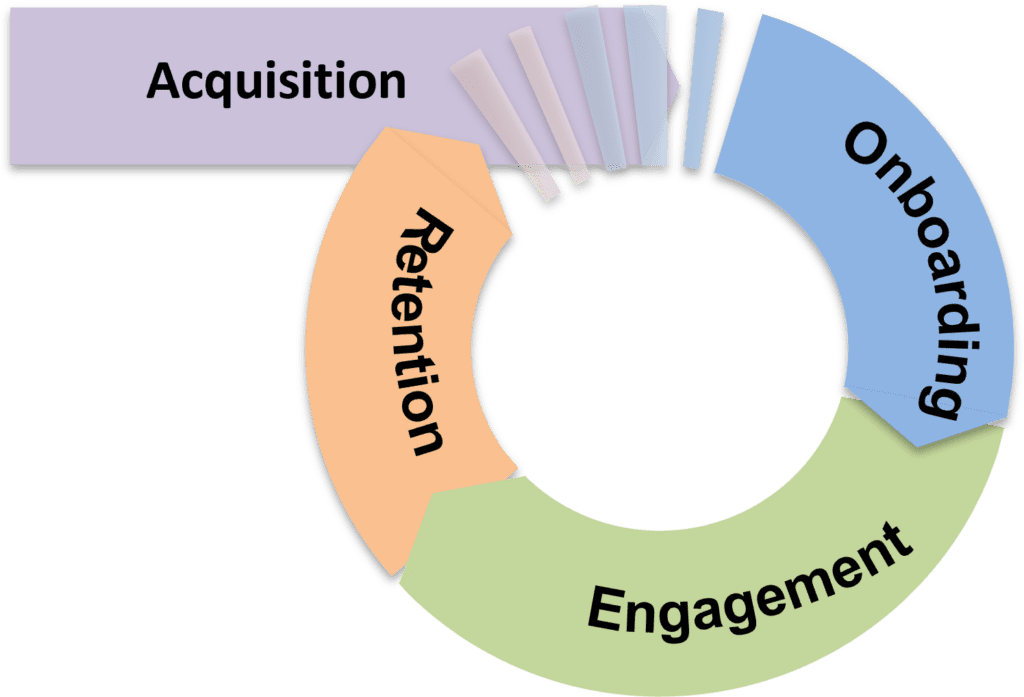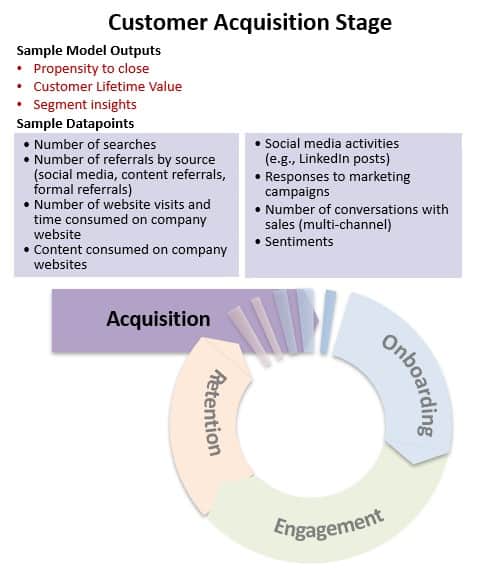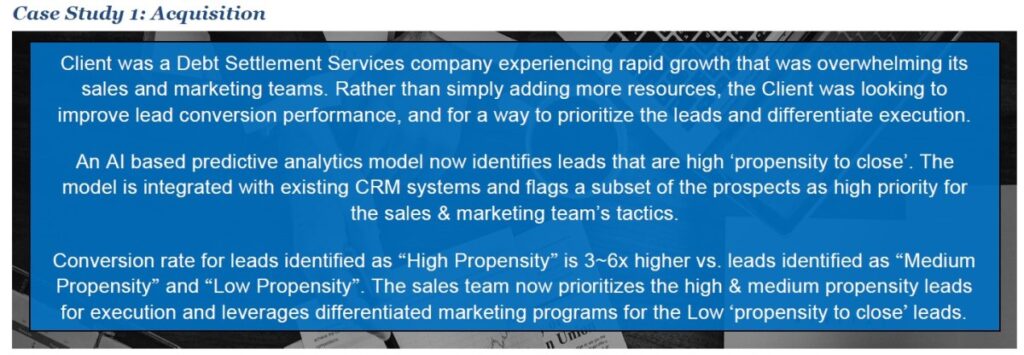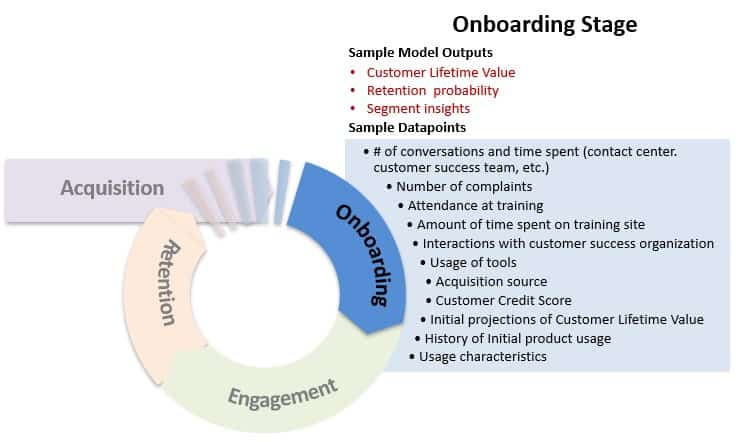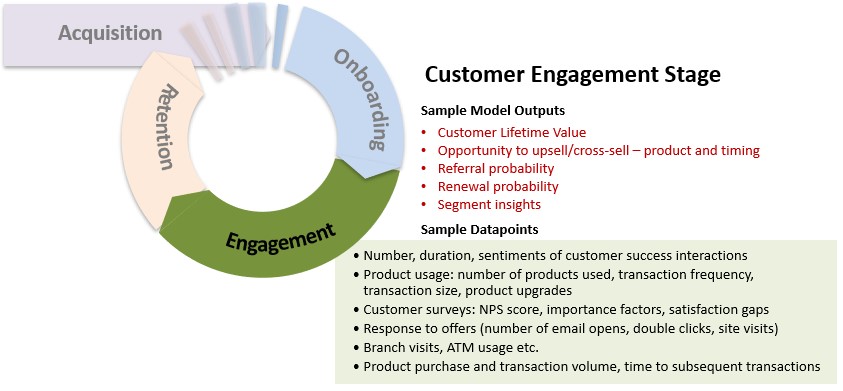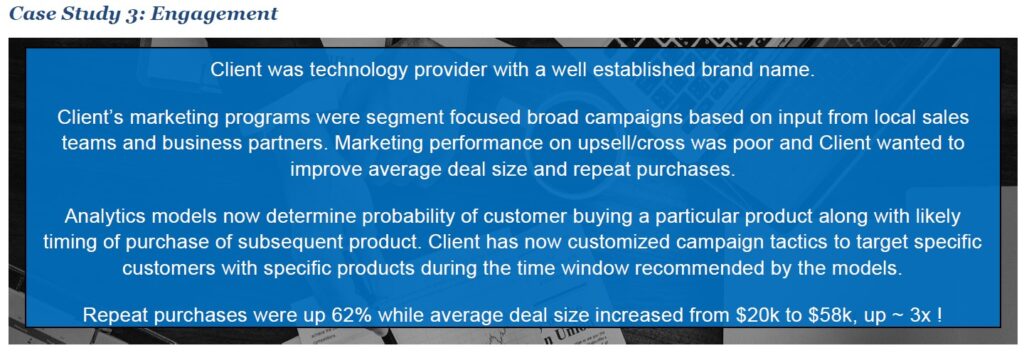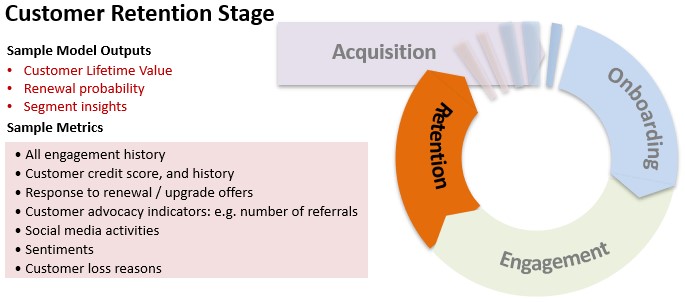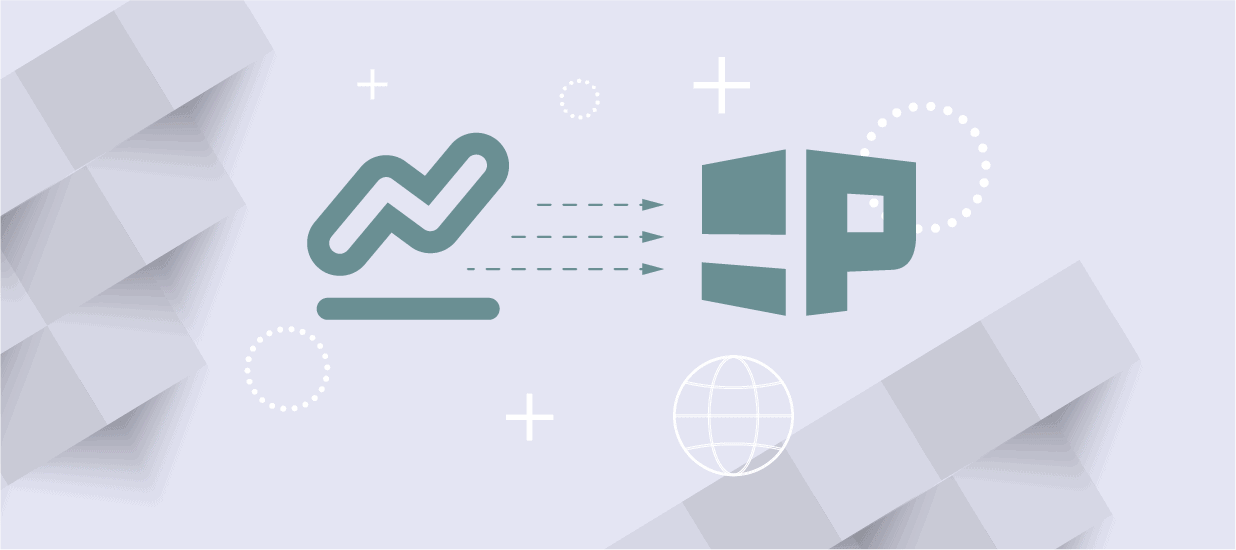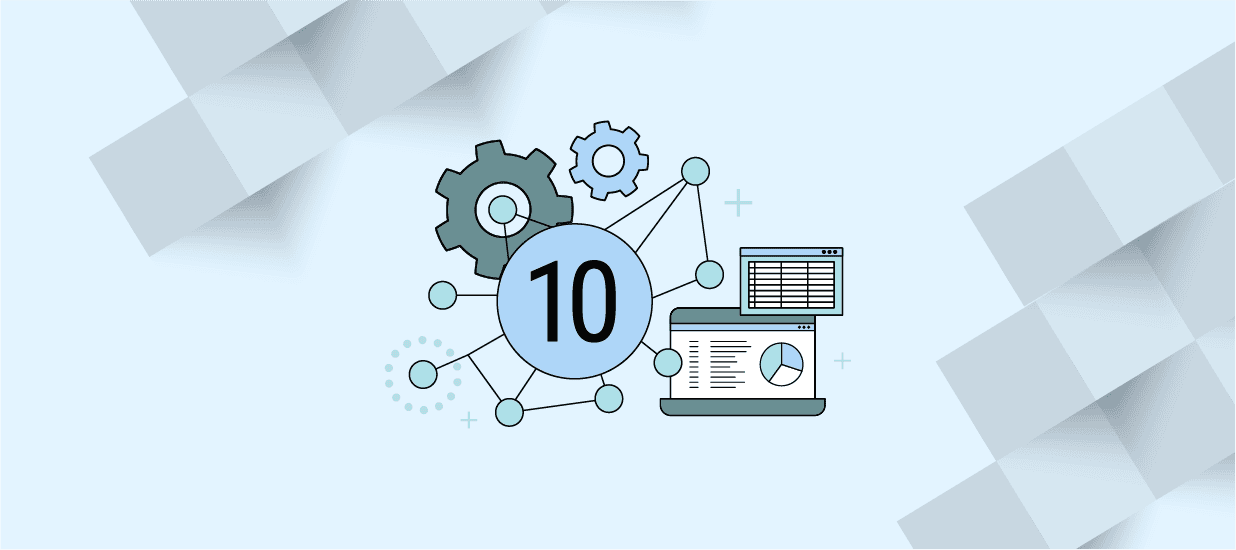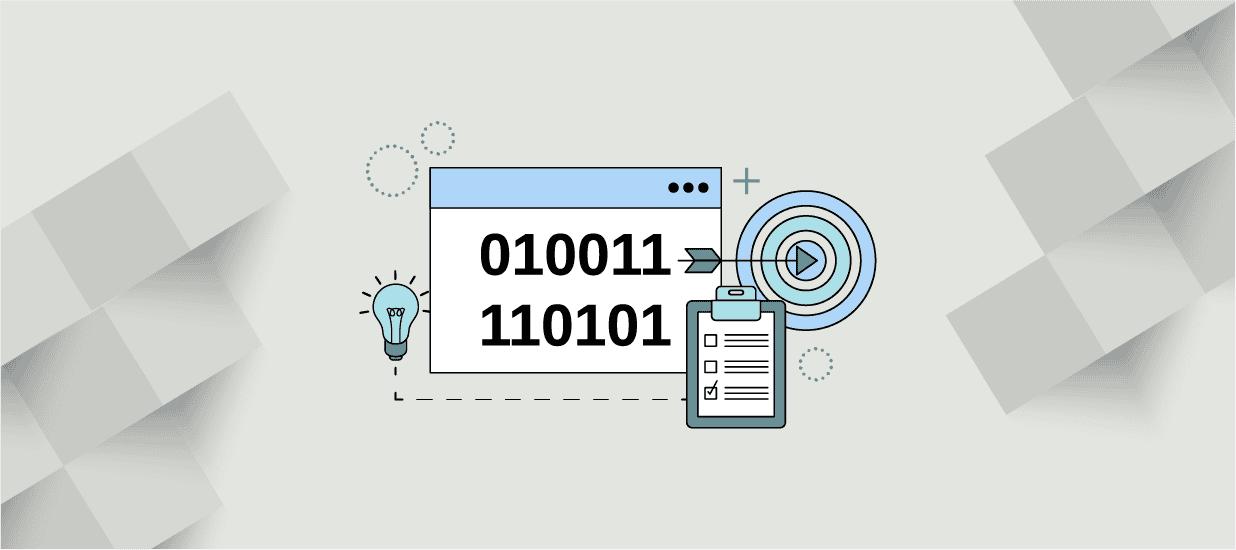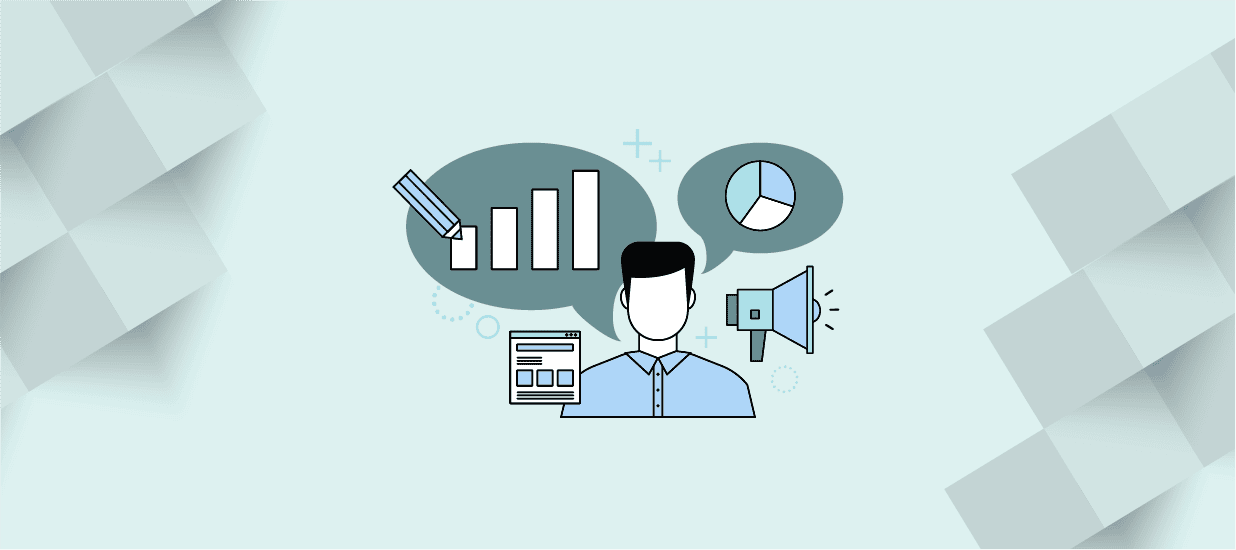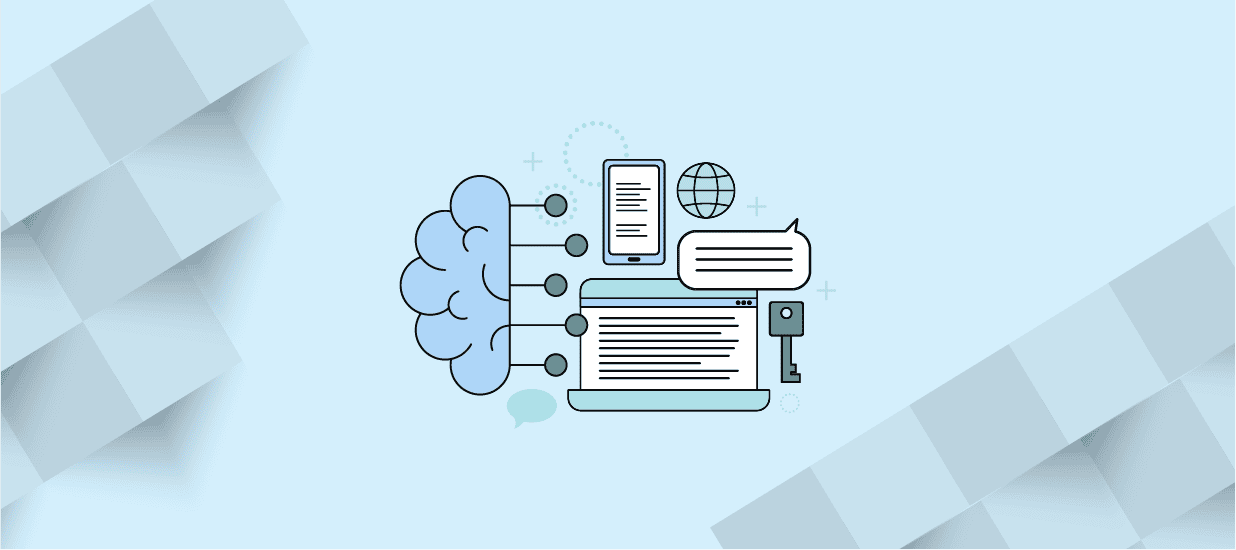It costs five times as much to attract a new customer than to keep an existing one.
This is a standard marketing mantra. While the actual multiple varies based on the research approach and industry, it’s undisputed that the cost of acquiring a new customer is significantly higher than the cost of retention.
We know retention directly affects the bottom line. Increasing customer retention rates by 5% increases profits by 25% to 95%, according to research by Frederick Reichheld of Bain & Company.
However, most companies don’t realize acquisition and retention are two small components of overall Customer Lifetime Value (CLV), which has a significant impact on the top and bottom line for the company. According to statistics from Gartner, 80% of your company’s future revenue will come from just 20% of your existing customers. Clearly, not all customers are equal, and understanding CLV is critical to success.
At any point in time, your customers are at different stages of their life cycle. (Recapture provides a helpful visual showing how CLV affects every area of your business.) As customers progress through their life cycles, you can get better insights on their CLV. Identifying each customer’s stage and their CLV potential will ensure you prioritize and invest in the right ones.
“80% of your company’s future revenue will come from just 20% of your existing customers. Clearly, not all customers are equal.”
Analyzing customer onboarding activities and purchase patterns uncovers insights that could help you deliver a higher customer satisfaction and experience while also extracting higher CLV. The drivers of CLV likely vary significantly by industry, company and region.
Consider these questions:
- How do you determine customers with high CLV?
- How do you analyze data across the customer life cycle to get a comprehensive and quantitative view of the customer?
- How do you identify insights critical to improving both customer experience and CLV?
- How do you identify which prospects are most likely to convert to a client?
- How does customer onboarding and engagement relate to retention?
- How do you leverage customer engagement and purchase patterns to upsell and cross-sell?
- How do you determine which customers are at risk to churn so you take corrective action?
Artificial Intelligence (AI) can help you sift through large amounts of data and uncover the critical insights so you can identify the high-potential customers early and take the right action at the right time to deliver value.
Customer Life Cycle
Let’s break down the four stages of the customer life cycle:
- Acquisition: Driving customer acquisition across various sales and marketing activities is expensive and challenging. Understanding what influences and triggers the decision to buy is crucial, and identifying which prospects are likely to convert allows you to focus resources accordingly.
- Onboarding: Effective activation ensures customers secure value from offerings over time, as poor onboarding can lead to future retention challenges.
- Engagement: Identifying and capitalizing on the customers with the highest lifetime value is critical. Offering customers the right product or service at the right time can dramatically boost cross-sell and upsell performance while also improving their experience.
- Retention: Identifying high-risk churn early in the customer life cycle can help improve retention. Satisfied and loyal customers are a competitive differentiator, leading to referrals and influencer sales.
Now, let’s go a bit deeper into each stage and see how AI can help uncover insights.
Acquisition
There are numerous data points available within the company sales and marketing processes and CRM systems as prospects navigate the decision process. However, you shouldn’t limit the data you analyze to traditional CRM systems; there is valuable data in phone systems, chat, website touch points, etc.
You can often augment with external data sources, including social media posts, purchased commercial data, geographical and profile information (see sample metrics in the figure).
Predictive models can analyze traditional and non-traditional data, past conversion performance, profiles of leads and converted clients, along with external data to provide insight to which prospects have “higher propensity to buy.” Models can also provide early insights on CLV (although with limited data) and segment-level insights.
Armed with these insights, you can then focus marketing investments on relevant segments, differentiate and customize marketing tactics and channel execution at a segment level, and also customize by individual prospects.
Align sales and marketing resources to prioritize prospects with a higher likelihood to buy. You might have different approaches for prospects based on their odds of conversion. For example, align broad marketing tactics focused on low propensity to buy prospects and leverage expensive sales resources to focus on high propensity to buy prospects.
Onboarding
Customer onboarding is one of the most important stages, with long-term engagement and retention impact. How you treat a customer immediately after the sale is finalized significantly affects their loyalty. Onboarding activities can provide deep insights into customer lifetime value potential and even future churn risk.
These are all valuable data points (see sample metrics in the figure): attendance; training completion; tool adoption; the frequency, duration and content of interactions with the company support teams; and website interactions during onboarding.
Predictive analytics models can analyze customer segment and profile data, historical onboarding patterns, downstream engagement and retention performance. This will help you predict likely outcomes and customer lifetime value based on the traction in the initial customer onboarding.
Engagement
This stage in the customer life cycle provides an opportunity to deepen relationships, deliver value and build loyalty. Identifying and capitalizing on which customers have the highest lifetime value can position your organization for success. Choosing the right offering and timing for cross-sell/upsell is critical to optimizing ROI from sales and marketing activities. Understanding customers’ usage patterns and sentiment through their engagement will provide insights you can leverage to improve customer satisfaction while positively impacting sales and reducing churn risk.
Analytics models can analyze vast amounts of data from disparate sources such as customer success conversations, product usage patterns, account transactions and customer surveys to further improve CLV predictions. You can then invest in customers with higher CLV early in the process.
Using the insights from these models, identify high propensity-to-upsell/cross-sell customers, determine which products they are likely to buy when, and customize your sales and marketing activities to target the right customers with the right offerings at the right time.
Retention
Retention is the culmination of performance across all previous stages. Identifying customers at high risk for churn early in the customer life cycle enables you to take corrective actions to retain them.
Analytics models can sift through large amounts of data to identify these customers. CLV predictors enable you to prioritize the customers to target. You might also identify customers who you don’t want to retain.
Concepts like CLV and customer life cycle are not new, nor is AI. What is new is the massive and previously unimaginable quantity of available data across different sources. With the current computational power, technologies such as AI, deep learning, machine learning, and predictive analytics can analyze significant amounts of data, identify patterns and extract insights in real time.
With the right insights, you can now identify customers with high CLV and implement targeted actions across your business to deliver more value to your customers across the customer life cycle.
* * *

Learn how Pragmatic Institute can train your data team to deliver critical insights that power business strategy.
Author
-

Harish Krishnamurthy, with 36 years of expertise in data, has held pivotal roles at Honeywell, McKinsey & Company, A.T. Kearney, IBM, Insight, Spear Education, Sciata, and Pragmatic Institute. With leadership spanning P&L, sales, marketing, and strategy, he has made significant contributions to the field. For questions or inquiries, please contact [email protected].
View all posts


